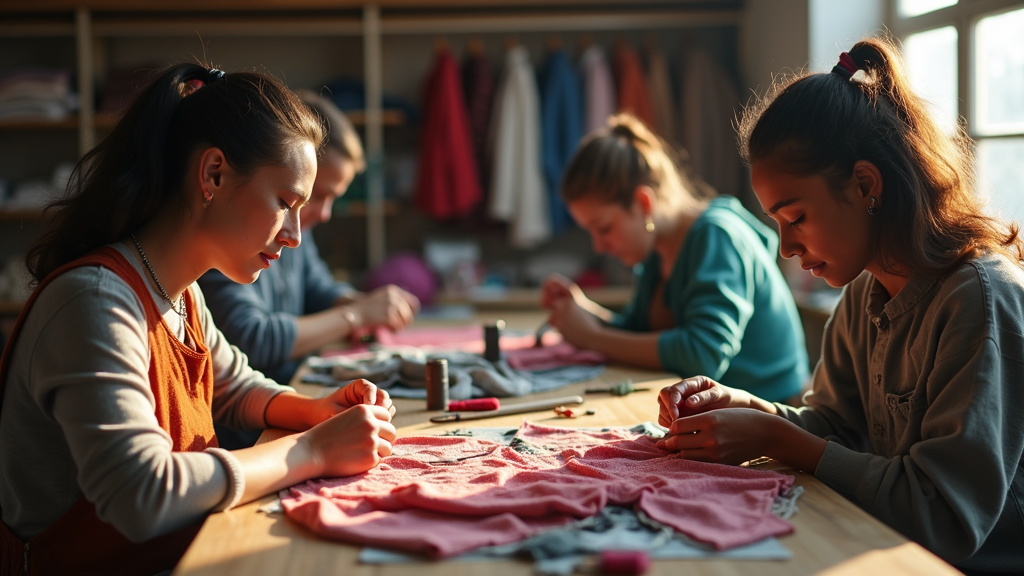Ballina Shire Council is at the forefront of a significant movement to tackle Australia’s growing textile waste problem, launching an ambitious new project aimed at transforming community habits around fashion and clothing consumption. The “Creating a Circular Clothing Community in Ballina Shire” initiative, also known as ReWear Ballina, is a timely response to startling statistics revealing that a vast majority of discarded clothing is still perfectly wearable or requires only minor repairs.
This vital project, backed by a $32,400 grant from the NSW Environment Protection Authority (EPA) under the Local Government Waste Solutions Fund, signals a proactive approach to environmental stewardship. Running until June 2026, ReWear Ballina seeks to foster a culture of repair, reuse, and upcycling, thereby diverting a significant amount of textiles away from landfill.
The Scale of the Fashion Waste Crisis
Australians are recognized globally for their love of fashion, but this passion comes with a steep environmental cost. On average, each Australian purchases a staggering 56 new clothing items annually, placing the nation among the world’s highest per capita consumers of textiles. This trend, often driven by the allure of fast fashion, contributes to an alarming waste crisis, with over 200,000 tonnes of clothing ending up in Australian landfills each year. This colossal figure is equivalent to nearly four times the weight of the iconic Sydney Harbour Bridge. In Ballina Shire specifically, textiles constitute the third most common item found in domestic landfill bins, highlighting the local impact of this global issue.
The environmental consequences are severe: decomposing textiles in landfills release harmful methane gas, and the production process for new clothing strains precious resources like water and energy, contributing significantly to global carbon emissions. Indeed, the fashion industry is estimated to be responsible for up to 10% of global greenhouse gas emissions, more than international flights and maritime shipping combined.
Ballina’s Insight: Audit Reveals High-Quality Waste
The impetus for the ReWear Ballina project stems from a comprehensive audit conducted at the Ballina Resource Recovery Centre. In a four-week period, nearly 5,000 litres of textiles and over 2,000 individual clothing items were meticulously sorted. The findings were eye-opening: a remarkable 83.5% of the discarded items were either in near-perfect condition or required only minor repairs to be made wearable again. This statistic underscores a fundamental flaw in current consumption patterns – the increasing tendency to discard perfectly good clothing rather than repair or repurpose it.
“Our aim is to work with the community to help shift behaviours around fashion and textiles by promoting repair and reuse to keep clothing out of landfill,” explained Justine Rowe, Resource Recovery Education Officer and project lead at Ballina Shire Council. “The numbers from the audit mirror the fashion waste problem across Australia. We have too many clothes, we wear them too little, and replacing them has become cheaper than repairing them.”
Introducing ReWear Ballina: A Circular Approach
Through the “Creating a Circular Clothing Community in Ballina Shire” project, Council is taking a multi-faceted approach. Funding from the NSW EPA supports not only the initial audit but also the crucial next phase: education and community engagement. The initiative aligns with the NSW Government’s broader Waste and Sustainable Materials Strategy, aiming to transition the state towards a more circular economy. This national trend sees organisations like the Australian Fashion Council developing stewardship schemes to encourage responsible practices throughout the clothing lifecycle.
Empowering the Community: Repair and Upcycling Workshops
Central to the ReWear Ballina project are community workshops designed to equip residents with the skills and confidence to mend, alter, and upcycle their clothing. These hands-on sessions are more than just skill-building opportunities; they are platforms for fostering community connections and promoting mindful consumption. By learning to repair and reimagine garments, residents can extend the life of their clothes, save money, and express their creativity. The project also includes an online survey to gather valuable insights into local purchasing, care, and disposal habits, further informing future community initiatives.
A Trending Movement Towards Sustainability
Ballina Shire Council’s commitment to sustainability is evident in its Climate Change Policy, which targets net-zero emissions from council operations by 2030. The ReWear Ballina project is a natural extension of this, addressing a critical sector that significantly impacts environmental health. As news of such initiatives spreads, they inspire broader participation and drive a necessary cultural shift. The project champions a philosophy echoed by many sustainability advocates: “Buy less, choose well, make it last.”
Conclusion
The “Creating a Circular Clothing Community in Ballina Shire” project represents a significant step forward in addressing the pervasive issue of textile waste. By focusing on community empowerment, education, and the promotion of circular economy principles, Ballina Shire Council is not only tackling a pressing environmental challenge but also cultivating a more conscious and sustainable future for fashion and consumption within the region. This news is a timely reminder of how local action can contribute to global solutions in the fight against waste.





